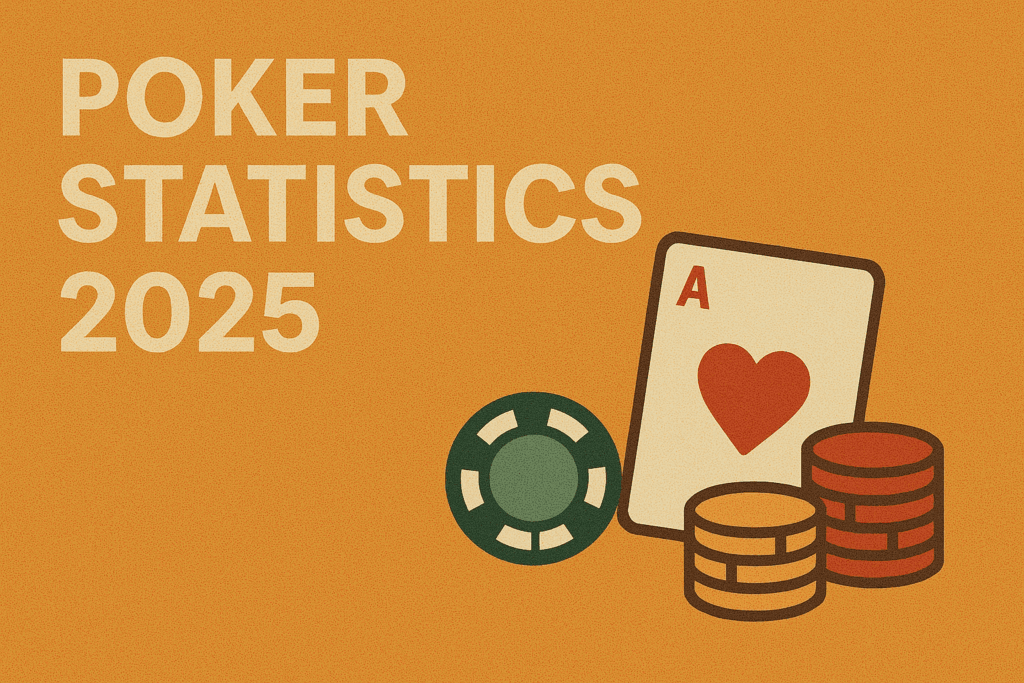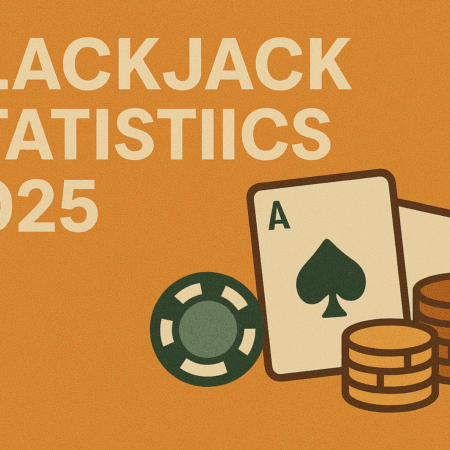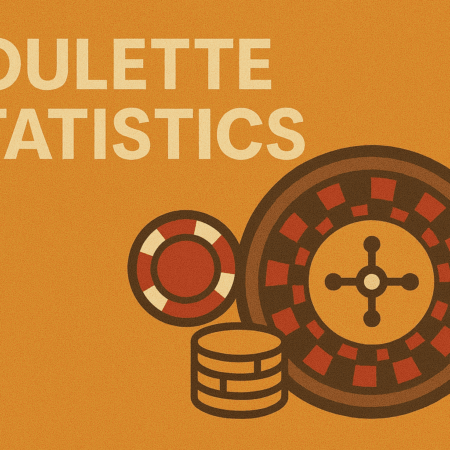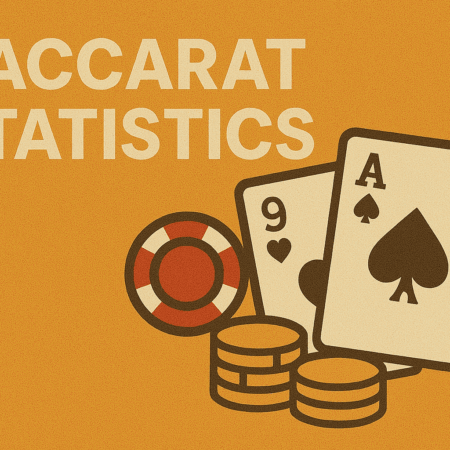
Poker continues its global rise, combining thrilling gameplay with deep mathematical strategy. In 2024, the online poker market was valued at approximately US $3.86 billion and is projected to more than double by 2030, growing at a CAGR of 10.2%, thanks to mobile-first platforms and regulatory expansion. Meanwhile, live poker thrives, with the 2024 World Series of Poker (WSOP) attracting a record-breaking 10,112 entries and creating a staggering US $94 million prize pool.
- Sign-Up Offer
- FREE 500 GC + 3 SC
- No purchase necessary
- 100% First-Purchase Boost
- Daily Login Bonus: 10 FS
- Social Media Contests
- VIP Exclusive Rewards
Why do numbers matter in poker? Beyond mere curiosity, statistics are the foundation upon which winning strategies are built. From evaluating pre-flop odds to recognizing patterns in player behavior, success often depends on interpreting data accurately. As we move through 2025, with sharper tools and more competitive environments, data-literacy isn’t optional—it’s a crucial edge. This article provides a comprehensive and up-to-date breakdown of poker statistics—covering game popularity, hand probabilities, player trends, professional earnings, bluffing behavior, and more—geared toward casual players, iGaming professionals, and data-driven gamblers.
Most Common Poker Games & Formats
While poker includes several popular variants, Texas Hold’em remains the global juggernaut—online and live. Other major formats include Omaha, Seven-Card Stud, and mixed formats like HORSE. Texas Hold’em captured the highest market share of over 62% in 2024. The market is witnessing robust growth, with the Texas Hold’em segment continuing to dominate due to its widespread popularity and easy-to-understand gameplay.
Online play has eclipsed live games in volume due to convenience and pace. Online tables deal roughly 75–90 hands per hour, compared to just 25–30 hands at live tables. As of 2022, mobile devices accounted for over 60% of online poker traffic, and by 2025, across all iGaming—including poker, casino, and sports—the share of users accessing via smartphones had risen to around 80%.
Live poker, by contrast, offers a slower but often more exploitable landscape—casual and recreational players tend to dominate. Meanwhile, online audiences favor fast-fold formats, tournaments, and sit-and-gos, reflecting a global shift toward digital convenience. Overall, the poker ecosystem in 2025 is more diverse and technologically sophisticated than ever.
Poker Hand Probabilities: What the Math Says
Understanding the odds behind each hand is fundamental to strong poker decision-making. Below is a quick reference chart showing the probability of making a specific hand (5 out of 52). 5 out of 52 means that you build your hand using 5 cards.
| Hand Type | Probability |
| Royal Flush | ~0.000154 % |
| Straight Flush | ~0.00139 % |
| Four of a Kind | ~0.0240 % |
| Full House | ~0.144 % |
| Flush | ~0.197 % |
| Straight | ~0.395 % |
| Three of a Kind | ~2.112 % |
| Two Pair | ~4.753 % |
| One Pair | ~42.26 % |
| High Card (no pair) | ~50.12 % |
These odds mean you’ll see a pair in about 42 % of your hands pre-flop, while flushes and straights are exceedingly rare. These stats lay the groundwork for assessing whether to continue or fold when drawing.
Post-flop, probabilities shift based on your hand and the board. Common scenarios include:
- Flush draw (4 suited cards on flop): ~35% chance to complete by the river.
- Open-ended straight draw: ~31% chance by river.
- Gutshot straight draw: ~17% chance.
- Set with pocket pair: ~11.8% chance to improve to three of a kind on the flop.
These numbers are not just theoretical—they directly influence pot odds and implied odds. For example, with a 35 % chance to complete a flush and pot offering 2.5-to-1, the call is profitable in the long run.
Visual Aid Suggestion:
- Pre-Flop Odds Chart illustrating the rarity of premium hands.
- Draw Completion Graph, showing probabilities for flush, straight, and set draws from flop through river.
By internalizing these probabilities, poker players can make informed calls rather than emotionally driven decisions. In later sections, we’ll show how this foundation supports more advanced statistical play and edge exploitation.
Winning Hand Statistics
Poker hand strength does not always equal victory. While players instinctively favor high-ranking hands like pocket aces, real-world poker outcomes frequently depend on post-flop play, board texture, and opponent behavior.
✅ Most Common Winning Hands:
The most common winning hand in Texas Hold’em is one pair, which occurs frequently simply because of the sheer probability of pairing one of your hole cards with the community cards. Following that, two pairs and three of a kind (trips) are also regular winning hands, appearing more often than more premium hands like straights, flushes, full houses, or quads. The guide emphasizes that hands like straights and flushes, while powerful, occur less frequently and often require specific board textures to hit. This aligns with basic poker probabilities, where one pair occurs in roughly 42% of dealt hands, and two pairs appear about 4.75% of the time in five-card poker combinations. More powerful hands like full houses (0.14%) or four of a kind (0.024%) are extremely rare.
This rarity of premium hands explains why many pots are often won with relatively modest holdings, especially when aggressive betting forces opponents to fold before the river. Even premium starting hands like pocket aces (AA), while strong, still have a roughly 77% winning chance against a single random hand pre-flop, meaning they will lose approximately 23% of the time in that scenario. This underlines poker’s inherent variance and the importance of strategic betting, not just relying on hand strength.
Hands That Lose Most Often Despite Strength:
- Pocket Jacks (JJ) notoriously underperform. While strong pre-flop, they are dominated by higher pairs and coin-flip poorly against overcards (AK, AQ).
- AK (“Big Slick”) wins only about 65% of the time heads-up against random hands but can drop to below 50% against pocket pairs.
This variance highlights that poker isn’t just about starting hands. Post-flop decisions, position, aggression frequency, and opponent tendencies matter significantly more for long-term success.
Online Poker Player Behavior in 2025
The online poker ecosystem has evolved dramatically. Data from major platforms like PokerStars, GG Poker, and 888poker shows several shifts in player behavior.
Average Session Length:
- Casual players tend to play 35–60 minutes per session.
- Regular grinders average 2–4 hour sessions, often multitabling.
Win/Loss Percentages:
- Winning players account for just 12%–15% of the player pool. The vast majority are either break-even or losing players, contributing to the rake economy.
- Among winning players, only a minority sustain win rates above 5 bb/100 hands. Most hover between 2 and 4 bb/100, particularly at micro- and low-stakes.
Most Played Stakes:
- NL5 and NL10 ($0.02/$0.05 and $0.05/$0.10) dominate online poker traffic.
- Mid-stakes ($0.50/$1 to $2/$5) comprise a smaller but more competitive ecosystem, requiring sharper strategies.
Mobile vs. Desktop:
- Around 65% of online poker hands are now played via mobile devices, reflecting broader iGaming trends.
These figures underscore a massive increase in casual mobile play but also a steep skill curve at higher stakes. Additionally, the rise of fast-fold formats (like Zoom Poker) has shortened average hand duration while amplifying variance.
Professional Poker Tournament Data (2024–2025)
Major Tournament Trends:
The global poker scene in 2024 and 2025 has been marked by robust growth, with the World Series of Poker (WSOP) and European Poker Tour (EPT) continuing to set records for participation and prize pools. The WSOP Circuit (WSOPC) expanded its schedule, drawing top talent and new faces alike. Maurice Hawkins further cemented his legacy by claiming his 19th WSOPC ring and surpassing $1.7 million in circuit earnings. The 2025 WSOP in Las Vegas began with strong momentum, featuring daily updates and fierce competition for the Player of the Year (POY) title. At the halfway mark, Scott Bohlman led the POY race, while Benny Glaser and Daniel Negreanu remained close contenders, each showcasing consistent deep runs and multiple final table appearances. On the EPT front, the 2025 Monte Carlo Main Event attracted 1,195 entries and generated a €5.8 million prize pool, with Norway’s Jon Kyte taking top honors. High-stakes events, such as the Super High Roller, continued to thrive, reflecting the enduring appeal of elite live poker.
Country-by-Country Data:
American players continued to dominate the cashes leaderboard, but the international presence at major events grew stronger. Notable performers included Hong Kong’s Yan Shing Tsang (16 cashes), North Macedonia’s Ilija Savevski (17), and Canada’s Alan Engel (15). Other countries with standout players included Brazil, Azerbaijan, England, Germany, France, Bulgaria, China, Israel, the Czech Republic, Sweden, Poland, Japan, and Thailand. This diversity highlights the increasingly global nature of the professional poker circuit, with players from every continent making deep runs and earning significant payouts.
Top Player Earnings (2024–2025):
In terms of earnings, Maurice Hawkins led the WSOP Circuit with $1,716,419, followed by Ryan Jones and Kyle Cartwright, both surpassing the $1 million mark. On the EPT, Jon Kyte’s win at the Monte Carlo Main Event earned him a significant share of the €5.8 million prize pool. Early WSOP 2025 events saw Michael Wilklow and Phovieng Keokham capturing major six-figure prizes. The Global Poker Index (GPI) POY leaderboard featured William Foxen, Jesse Lonis, and David Coleman as top earners, each with over 3,700 points, reflecting consistent high-level performances across multiple events.
Most Cashed Hands in Tournaments:
The 2024 WSOP saw Shaun Deeb top the list with 22 cashes, followed closely by William Alex Foxen and Benjamin Yu with 18 each. Players like Jeremy Ausmus, Scott Seiver, and Yan Shing Tsang also posted impressive numbers, each recording 16 or more cashes. The breadth of players achieving double-digit cashes demonstrates both the depth of the field and the importance of endurance and versatility in modern tournament poker.
Other Notable Stats:
The 2025 WSOP featured record-breaking daily prize pools and a fiercely competitive POY race, with multiple former champions vying for the title. The EPT’s Super High Roller event in Monte Carlo drew 74 entries and a €7.2 million prize pool, underscoring the continued growth of high-stakes tournament poker. Across the board, the 2024–2025 period has seen rising prize pools, increasing international participation, and a new generation of players challenging established stars for poker’s top honors.
This surge in both field sizes and prize pools suggests that poker’s popularity hasn’t waned—in fact, the 2025 ecosystem shows it has diversified and globalized more than ever.
Bluffing, Betting & Folding Stats
Bluffing remains a nuanced and strategic element of poker. According to game-theory-optimal (GTO) principles, your bluff frequency should match the pot odds you’re giving opponents. For instance, if you bet the size of the pot on the river (offering 2-to-1 odds), you need to bluff roughly 33% of the time to remain unexploitable. GTO solvers outline ideal bluff-to-value ratios of 2:1 on the flop, 1:1 on the turn, and 1:2 on the river.
However, bluff profitability varies by opponent. Against weak players who fold too often, bluffing becomes a powerful exploit play. Bluff success also hinges on bet size: larger bets require higher immediate fold rates to remain profitable. While theoretical balance is ideal, real-game dynamics call for situational adjustment—bluff more often versus tight players, less versus loose callers. Placing these theoretical numbers into practical play adds depth to your tactical range and enhances long-term EV.
The Rise of AI & Poker Bots
AI’s influence in poker has expanded dramatically. GTO solvers now guide both pro development and commercial software, making AI-driven strategy accessible. Meanwhile, AI-powered poker bots remain a concern online. However, platforms like GGPoker and PokerStars employ advanced detection tools to neutralize bot activity and enforce fair play.
While full-scale bot infiltration has diminished, its impact lingers—tighter lobby security, synthetic pattern detection, and periodic multi-account audits are standard. The result is a higher integrity environment where genuine players must match AI-informed strategies to compete effectively.
What Poker Stats Tell Us in 2025
Poker in 2025 is a game where math, strategy, and psychology intersect. Understanding hand probabilities, player trends, and betting patterns gives players a vital edge. While Texas Hold’em dominates, the rise of online play, mobile gaming, and AI tools continues shaping the landscape. Winning isn’t just about getting the best hands—it’s about using stats wisely, reading opponents, and adapting to the game’s constant evolution. Whether you’re a casual player or a serious grinder, success today means combining data-driven decisions with sharp instincts at every table.
For casual players, the lesson is clear: use statistical principles, know yourself (and your opponents), and learn to apply them dynamically. In today’s poker world, success comes from melding cold math with smart psychology—and that’s the winning hand in 2025.

 Canada
Canada Deutsch
Deutsch Español
Español Português
Português


